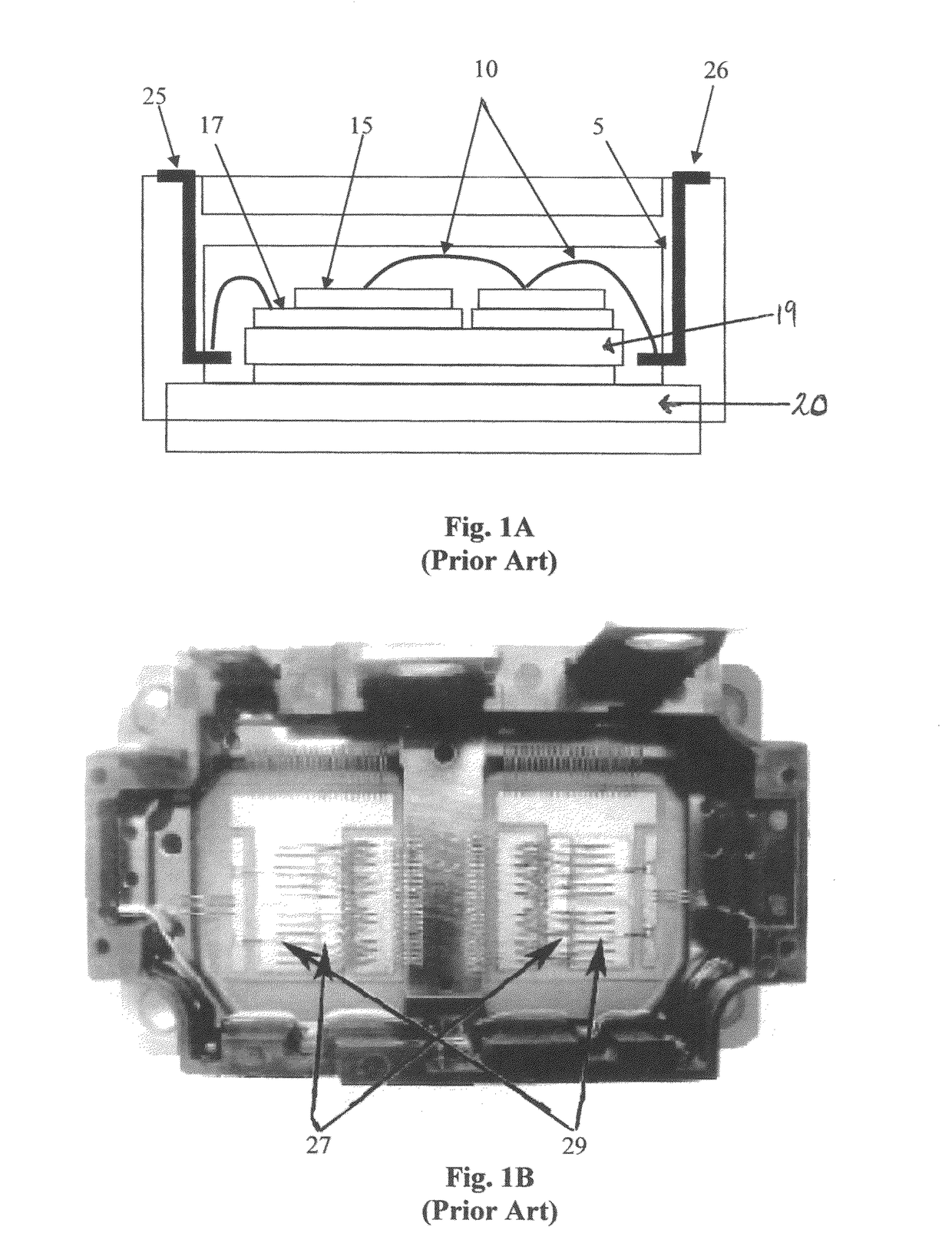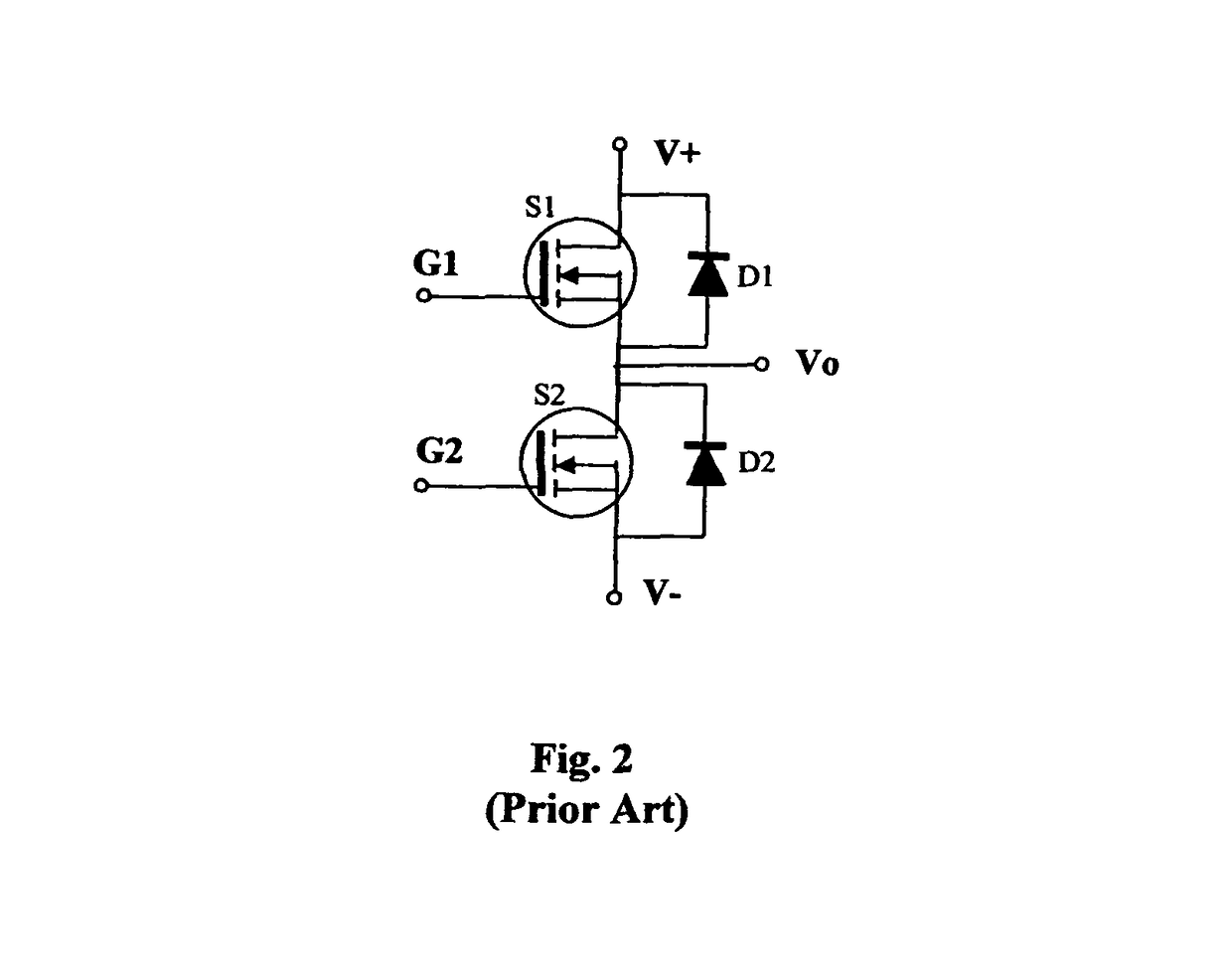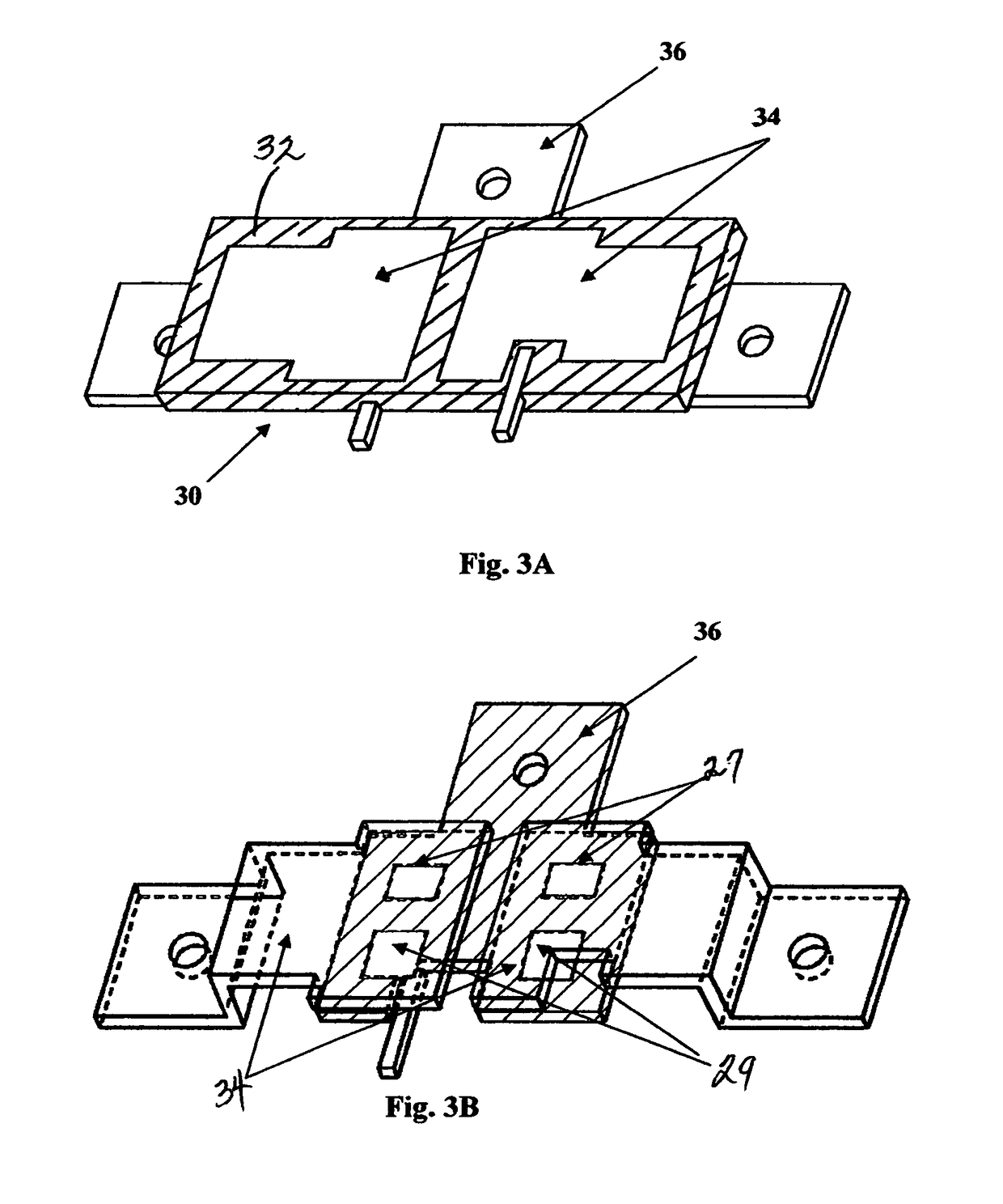High-temperature, wirebondless, injection-molded, ultra-compact hybrid power module
a hybrid power module and high-temperature technology, applied in the field of high-power and high-temperature hybrid power module packaging, can solve the problems of shortening the power handling capability and other requirements, unable to meet the requirements of high-temperature packaging systems, and the package is limited to relatively low current applications, so as to achieve cost-effective effects
- Summary
- Abstract
- Description
- Claims
- Application Information
AI Technical Summary
Benefits of technology
Problems solved by technology
Method used
Image
Examples
first embodiment
[0058]A novel hybrid power module concept is disclosed based on the use of double metal leadframes, direct leadframe-to-chip bonding, and injection-molded high temperature polymer encapsulation. A half-bridge circuit, consisting of two active SiC switches and two anti-parallel SiC Schottky diodes, is used for the purpose of illustration and specification of the prototype module design. The half-bridge circuit commonly used in conventional power modules is shown in FIG. 2. In FIG. 2, S1 and S2 are SiC power MOSFETs while D1 and D2 are SiC Schottky diodes.
[0059]The power module in FIG. 2 is the most basic building block in power electronics, which can be used in various combinations in electric vehicle motor drive inverters, power supply DC / DC converters, uninterruptible power supply DC / AC inverters, and many other applications. Nevertheless, the module construction of the present invention can be easily adapted to other circuit configuration such as 3-phase inverters or even RF power...
second embodiment
[0074]This embodiment is intended for medium or conventional temperature applications. The basic module structure remains the same as shown in FIGS. 6A and 6B. However, the leadframes can be made of copper (Cu) or Cu alloys instead of Mo. Silicon (Si) or silicon carbide (SiC) semiconductor chips 60 can be soldered to the leadframes using conventional soft solders such as tin / lead (Sn / Pb) solder paste. Conventional plastic encapsulation materials can be used as the molding compound to form the module encapsulation 70. When compared to the prior art conventional temperature power module, the new module still maintains most of the advantages described herein.
[0075]FIG. 7A provides a smaller configuration 80 of the hybrid power module of the present invention wherein a single SiC chip is used. FIG. 7B is an exploded view of the single chip diode power module 80 with a sandwich arrangement of a top metal leadframe 84 and a bottom metal leadframe 86 with the SiC chip 82 between the two le...
PUM
| Property | Measurement | Unit |
|---|---|---|
| thickness | aaaaa | aaaaa |
| thickness | aaaaa | aaaaa |
| thickness | aaaaa | aaaaa |
Abstract
Description
Claims
Application Information
 Login to View More
Login to View More - R&D
- Intellectual Property
- Life Sciences
- Materials
- Tech Scout
- Unparalleled Data Quality
- Higher Quality Content
- 60% Fewer Hallucinations
Browse by: Latest US Patents, China's latest patents, Technical Efficacy Thesaurus, Application Domain, Technology Topic, Popular Technical Reports.
© 2025 PatSnap. All rights reserved.Legal|Privacy policy|Modern Slavery Act Transparency Statement|Sitemap|About US| Contact US: help@patsnap.com



